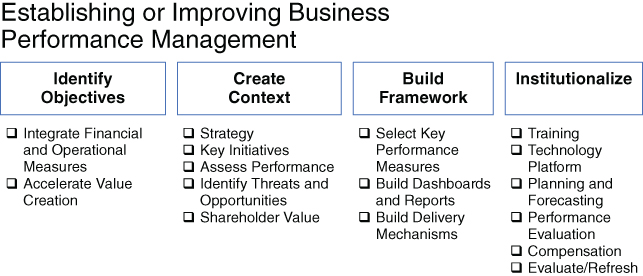9INSTITUTIONALIZING PERFORMANCE MANAGEMENT
CHAPTER INTRODUCTION
In earlier chapters in this section on performance management we covered the importance of stating objectives and developing a context. We then outlined best practices in selecting key performance indicators and building dashboards. We now turn to the process of institutionalizing performance management – that is, successful implementation and integration into all critical management processes. This step is the final and arguably most important aspect of successful performance management. If performance management is not integrated with other management processes, it will not be successful.
GAINING TRACTION
There are several critical steps that are necessary to effectively adopt performance management (PM) (see Figure 9.1). These include obtaining executive support, communication and training, using performance improvement tools, and developing a delivery mechanism.

FIGURE 9.1 Establishing a Performance Management Framework
Executive Support
Few initiatives are successful in a company without the passion and support of the CEO, CFO, and other members of the senior management team. Managers and employees are very adept at reading the level of commitment of leadership to any new project. Senior managers must support performance management in both word and action. The CEO will determine the ultimate success ...
Get Financial Planning & Analysis and Performance Management now with the O’Reilly learning platform.
O’Reilly members experience books, live events, courses curated by job role, and more from O’Reilly and nearly 200 top publishers.

